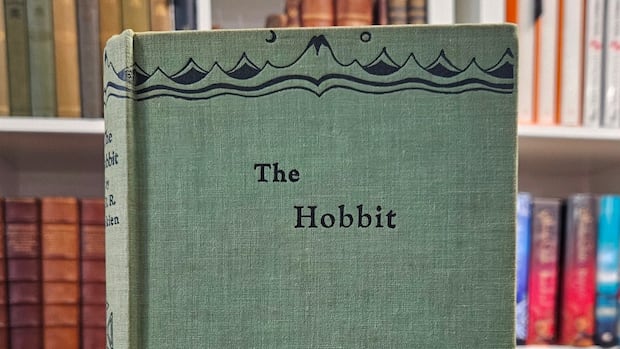As It Happens5:26Marble bust of rock legend Jim Morrison found, 37 years after it disappeared
A marble bust of rock legend Jim Morrison vanished without a trace in 1988, leaving behind only rumours, speculation and a mystery that baffled fans for decades.
Now, 37 years later, it’s finally been found — unexpectedly uncovered in Paris during an entirely unrelated investigation.
On May 16, the Paris Public Prosecutor’s Office announced the recovery of the long-missing sculpture. The police’s Financial and Anti-Corruption Brigade discovered the bust while executing a search order from an examining magistrate at the Paris Court.
For Jeff Jampol, manager of Morrison’s estate, the discovery was as unexpected as it was surreal.
“I thought, ‘Wow, it’s a really interesting twist,'” Jampol told CBC’s As It Happens host Nil Köksal.
“It was really interesting how they came across it while they were undergoing a different operation.”
Croatian sculptor Mladen Mikulin installed the bust, carved from Macedonian white marble, to place on Morrison’s tombstone in 1981, on the tenth anniversary of the Doors frontman’s death.
But over time, it was vandalized — its nose and lips chipped, covered in graffiti. And in 1988, it disappeared completely.
Now recovered, the sculpture is reportedly in the same condition it was when it disappeared — still marred by decades-old graffiti, the nose still broken.
There was no immediate word on whether the bust would be returned to the grave or what other investigation might take place, according to The Associated Press.
Larger than life
Morrison and the Doors left an indelible mark on the music scene of the 1960s. Co-creating the groundbreaking psychedelic rock band with keyboardist Ray Manzarek in Los Angeles, Morrison helped launch a sound that was dark, experimental and provocative.
“The Doors were a very edgy, dark, psychedelic band, and they sang about and spoke of things that most bands do not,” said Jampol. “It taps into a certain zeitgeist and a certain part of the conscious and unconscious. [They] stood apart from every other band I knew.”
The band exploded from obscurity to stardom with their 1967 breakout hit Light My Fire.
At the heart of that mystique was Morrison — nicknamed The Lizard King — whose magnetic voice and outlandish performances, became a symbol of rebellion and counterculture.
Before his days on stage, Morrison studied film at UCLA was a devoted reader of William Blake, Jack Kerouac and Allen Ginsberg — poets whose influence bled into his lyrics.
More than a bust
In 1971, at the height of his fame, Morrison moved to Paris with his longtime partner, Pamela Courson. He hoped to devote himself to writing poetry. But just months later, he was found dead in their apartment bathtub at the age of 27.
Though no autopsy was performed, his death was ruled a heart attack.
Morrison was buried in Paris’s famed Père-Lachaise Cemetery, resting among cultural giants like Oscar Wilde, Édith Piaf, and Frédéric Chopin.

“Jim had commented he would love to be buried there. He’s with his fellow artists,” said Jampol.
Morrison’s grave quickly became one of the most visited in Paris. Tourists and fans alike continue to flock there each year on the anniversary of his death.
“In a country where you have the Eiffel Tower and the Arc de Triomphe and the Notre-Dame Cathedral and Euro Disney and the Louvre Museum and the Champs d’Elysées, Jim’s gravesite at Père-Lachaise is one of the top five most visited sites in France,” Jampol said.
For fans, the bust is a tangible connection to Morrison’s legacy. But for Jampol, his essence lies elsewhere.
“There’s so much mythology and lore … tied up in Jim Morrison and the band,” he said. “Some [fans] are attached to physical objects.… They attach some kind of outsized lore to them.”
“But for us [and] for the Morrison family, we’re interested in the art, the music, the poetry and the filmmaking of Jim. That’s what’s important to us [than] which guitar Robby Krieger played, or which shirt Jim Morrison wore.
‘The art and the message is what’s key to us.”






